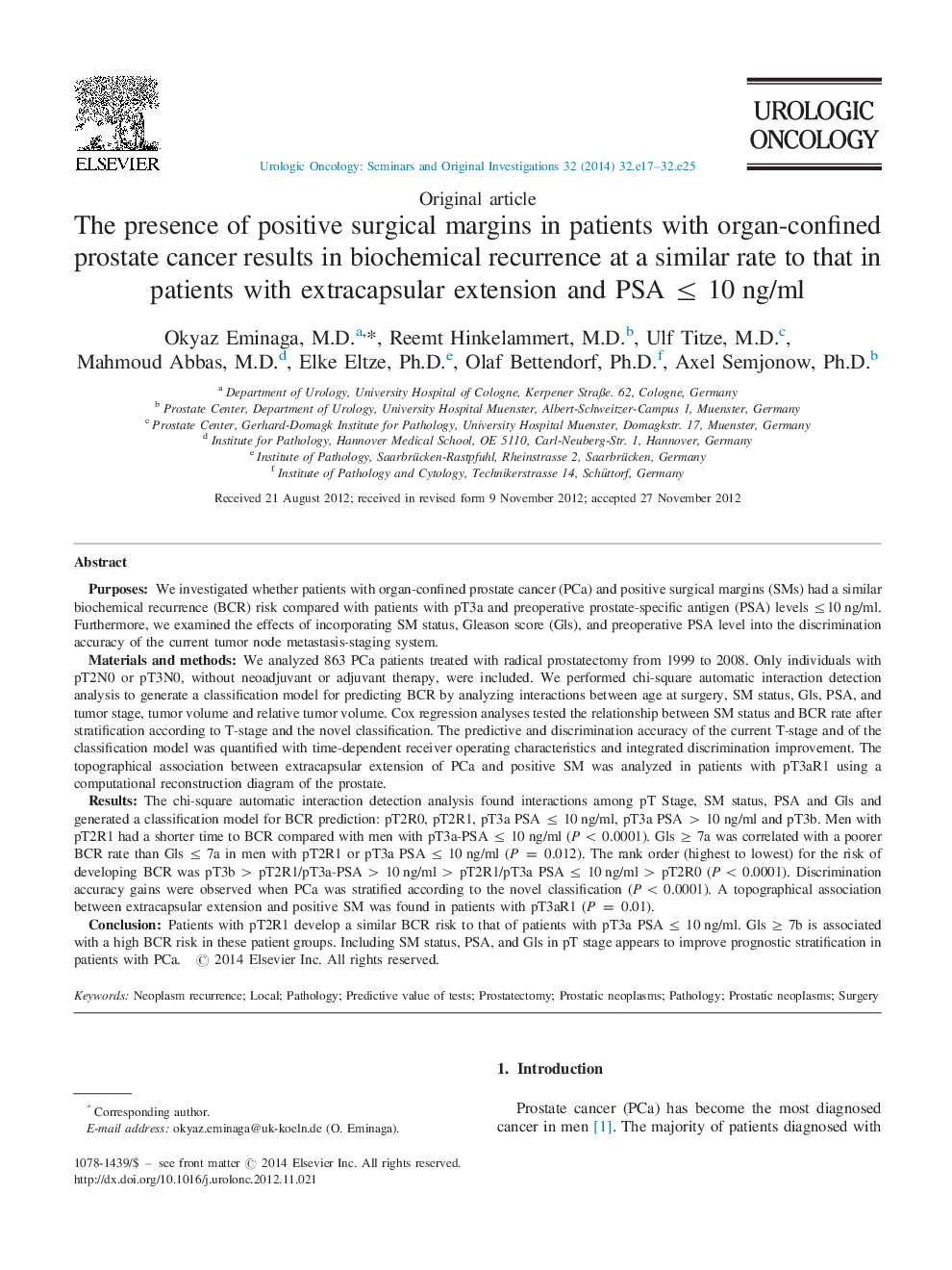| کد مقاله | کد نشریه | سال انتشار | مقاله انگلیسی | نسخه تمام متن |
|---|---|---|---|---|
| 6194421 | 1259362 | 2014 | 9 صفحه PDF | دانلود رایگان |

PurposesWe investigated whether patients with organ-confined prostate cancer (PCa) and positive surgical margins (SMs) had a similar biochemical recurrence (BCR) risk compared with patients with pT3a and preoperative prostate-specific antigen (PSA) levelsâ¤10 ng/ml. Furthermore, we examined the effects of incorporating SM status, Gleason score (Gls), and preoperative PSA level into the discrimination accuracy of the current tumor node metastasis-staging system.Materials and methodsWe analyzed 863 PCa patients treated with radical prostatectomy from 1999 to 2008. Only individuals with pT2N0 or pT3N0, without neoadjuvant or adjuvant therapy, were included. We performed chi-square automatic interaction detection analysis to generate a classification model for predicting BCR by analyzing interactions between age at surgery, SM status, Gls, PSA, and tumor stage, tumor volume and relative tumor volume. Cox regression analyses tested the relationship between SM status and BCR rate after stratification according to T-stage and the novel classification. The predictive and discrimination accuracy of the current T-stage and of the classification model was quantified with time-dependent receiver operating characteristics and integrated discrimination improvement. The topographical association between extracapsular extension of PCa and positive SM was analyzed in patients with pT3aR1 using a computational reconstruction diagram of the prostate.ResultsThe chi-square automatic interaction detection analysis found interactions among pT Stage, SM status, PSA and Gls and generated a classification model for BCR prediction: pT2R0, pT2R1, pT3a PSAâ¤10 ng/ml, pT3a PSA>10 ng/ml and pT3b. Men with pT2R1 had a shorter time to BCR compared with men with pT3a-PSAâ¤10 ng/ml (P<0.0001). Glsâ¥7a was correlated with a poorer BCR rate than Glsâ¤7a in men with pT2R1 or pT3a PSAâ¤10 ng/ml (P = 0.012). The rank order (highest to lowest) for the risk of developing BCR was pT3b>pT2R1/pT3a-PSA>10 ng/ml>pT2R1/pT3a PSAâ¤10 ng/ml>pT2R0 (P<0.0001). Discrimination accuracy gains were observed when PCa was stratified according to the novel classification (P<0.0001). A topographical association between extracapsular extension and positive SM was found in patients with pT3aR1 (P = 0.01).ConclusionPatients with pT2R1 develop a similar BCR risk to that of patients with pT3a PSAâ¤10 ng/ml. Glsâ¥7b is associated with a high BCR risk in these patient groups. Including SM status, PSA, and Gls in pT stage appears to improve prognostic stratification in patients with PCa.
Journal: Urologic Oncology: Seminars and Original Investigations - Volume 32, Issue 1, January 2014, Pages 32.e17-32.e25